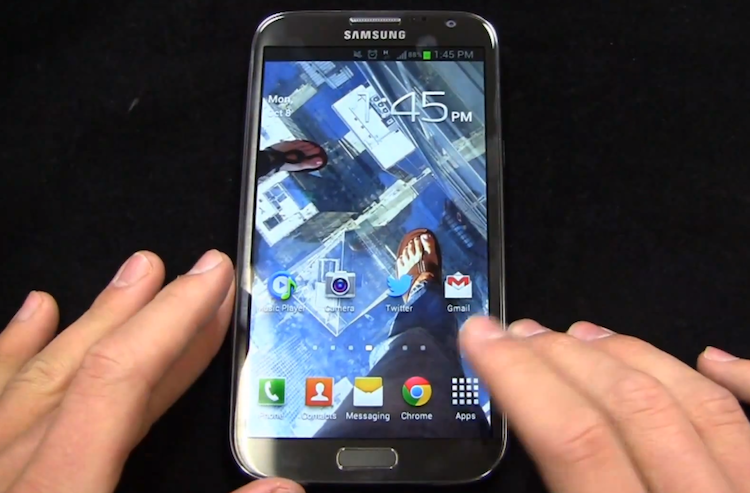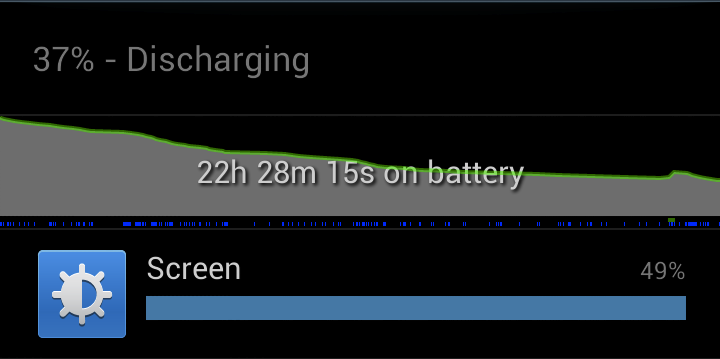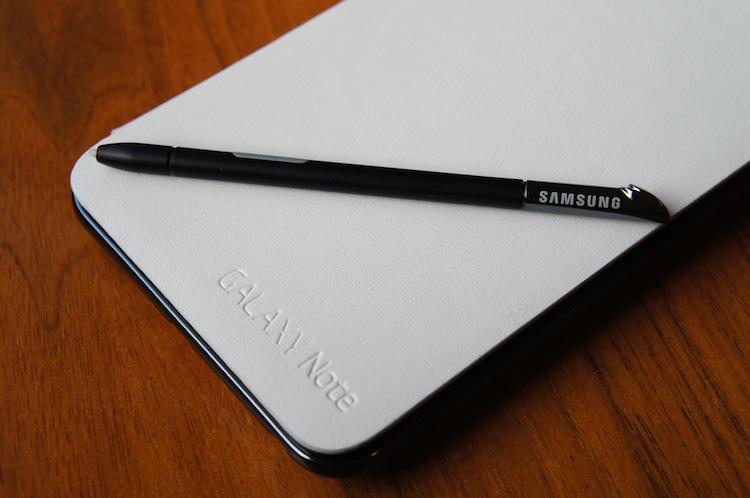
Samsung caught the world off guard with its first questionably large smartphone, the 5.3-inch Galaxy Note. Many feared it was too big to be considered a smartphone, too clunky to carry in your pocket everywhere, unwieldy at best. In the same respect, it's too small to be classified as a tablet.
Despite unprecedented skepticism and adversity, the Galaxy Note was a wild success worldwide, especially for a device believed to be so niche. Now Samsung is following-up the original Note with something bigger and better in almost every way, the Galaxy Note II.
Many of you already know the Note II is at the very top of my wish list. And I could go on all day about why I want a phone so big it barely fits in my pocket or how I miss the S Pen (stylus). But I'm going to keep this (relatively) short and simple. Below are five reasions you will want to check out Samsung's latest entry in the peculiar phablet market.

Among the refinements made by Samsung from the original Note to the second-generation is a new body design. It's not unlike that of the S III, though it bears harder corners than Samsung's current flagship. But Samsung also made the Note II 4.2mm taller, 2.5mm narrower and 0.3mm thinner than the original Note. From what I've been told, it fits in the hand a little better and allows for a better grip.
Most importantly, while trimming away the plastic, Samsung managed to squeeze 0.2 more diagonal inches into the display totaling a 5.5-inch screen. I can't imagine the change is all that significant to the naked eye, but you won't hear me complain, especially since the device is actually smaller in width and thickness.
Lest we forget, Samsung bumped the battery from 2,500mAh in the Galaxy Note to 3,100mAh for the Note II. And from what I'm hearing, the battery life on the Note II is worth writing home about. Our own Aaron Baker managed to hit 37 percent after 22 hours and 28 minutes. The impressive part is I've seen reports of even better stamina – measured in days – across the Web.

I've used many AMOLED panels in my day. In fact, I used the very first OLED bearing smartphone, the Samsung Moment on Sprint, the day it released. In comparison to every other smartphone display at the time, it was gorgeous. It showed contrast levels that taunted those of high-end televisions, colors were extremely saturated and the blacks were as inky as you could hope for.
However, shortly thereafter, Samsung graduated from OLED to AMOLED panels, then to Super AMOLED. The famed Samsung display was the Super AMOLED Plus panel used in the Galaxy S II series. When Samsung bumped the resolution from 480 by 800 pixels to 720p, though, they made the jump from the typical RGB stripe to a PenTile Matrix subpixel layout. What that means is the panel requires 33 percent fewer subpixels due to the sharing of subpixels in the formation. This was done to prolong the life of displays due to the blue pixels dying significantly quicker than the green or red subpixels.
This PenTile panel is commonly known as the HD Super AMOLED display used on the Galaxy Nexus, original Galaxy Note and the Galaxy S III. While it's just as bright as its counterparts and may require fewer subpixels for the same end resolution, there is a gaping flaw in some makes of the panel, especially in the Galaxy Nexus and Note. Whites and light grays are discolored and resemble fabric or parchment when at low brightness, and even with high resolutions like 720p, you can still see some pixelation or grain in highly saturated or high-contrast images.
The Note II still uses an HD Super AMOLED, and its resolution and density are lower than that of the original Note (1,280 by 800 pixels at 5.3-inches versus 1,280 by 720 at 5.5-inches, or 285ppi to 267 ppi). That said, Samsung has switched back to a unique RGB stripe for the Note II. This will be the best HD Super AMOLED panel to date – at least on paper.

In case you hadn't noticed, almost every current high-end Android smartphone (and the upcoming Windows Phone 8 devices) all bear something in common. They all have LTE in tow, and they're all powered by a 1.5GHz dual-core Snapdragon S4 chip.
The S4 has all but become a standard due to its compatibility with LTE. As much as we like the S4 chip, though, variation is nice. And we're no longer getting that in top tier smartphones. What fun is it for all the top smartphones gunning for the throne in our Official Smartphone Rankings to tout strikingly similar specifications?
Luckily, that is about to change. The quad-core Snapdragon S4 Pro is on the horizon. And the Note II will feature Samsung's in-house Exynos chip of the quad-core type. In the few smartphones bearing Exynos chipsets, Samsung's in-house processor brand has garnered oodles of fans, and rightfully so. Here's to quad-core Exynos power and LTE in one!

Over the last few months, the size of my smartphones has been slowly picking away at my nerves. I loved the original Galaxy Note but retired it in favor of the Snapdragon S4-bearing HTC One X. That was a 0.6-inch drop in display size that changed my outlook on future devices.
Some say the Note and Note II are entirely too big, that they're not practical for everyday use. I whole-heartedly disagree. As much as I use my smartphones and what I use them for, the more display the better. And while I would like to carry a 7-inch tablet everywhere with me instead of a smartphone, the Nexus 7 just doesn't fit in my pockets too well. (Nor does it have LTE.) The original Note fit in my pant and coat pockets with ease. Considering the second-gen Note has smaller dimensions, I imagine it will fit just as well.
Don't get me wrong, the Note II is certainly the upper extreme of how large a smartphone should be. I would be wary of anything larger. But it's a perfect balance between a miniature tablet and smartphone that is too large.

One of the many things I miss about carrying the original Note is the S Pen. Although it's just an inductive stylus with a button, I used it all the time. Mostly, I used it to annotate screen captures for notes, calendar entries or information I wanted to save from the Web. And sometimes it was just for fun.
As small a feature as the S Pen may seem, it's one of the more memorable features of the Note family, namely because that's what differentiates Notes from Tabs and the S series. But the S Pen also added a great deal of functionality and usability to the device itself. Samsung only furthered the functionality of the S Pen with the Note II.
This time around, the S Pen has been refined and is a bit larger so it's easier to hold on to. And pulling it out of the phone activates Page Buddy.
I am all but positive the Galaxy Note II will be my next smartphone. The original Note is easily one of my favorite smartphones to date, and the Note II is an improvement in almost every aspect. The Note II is slated to hit all the major U.S. carriers this fall, and it may even trickle down to regional providers in due time.
I know I'm buying one. Will you?
Image via GSMArena.com